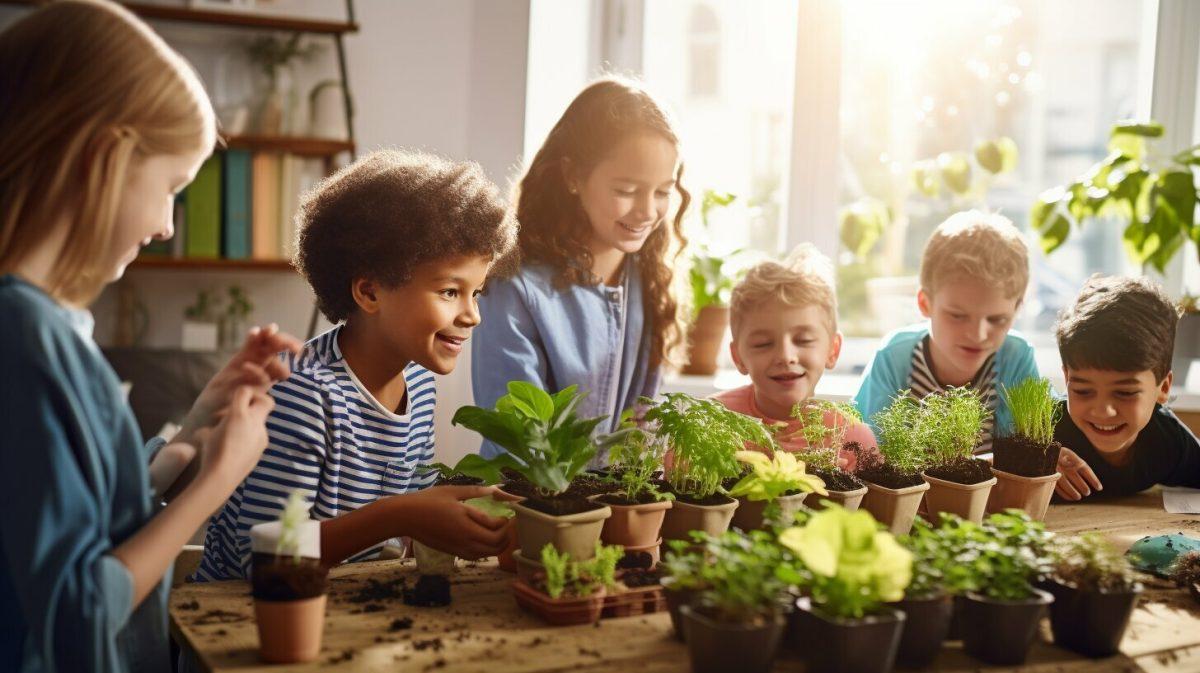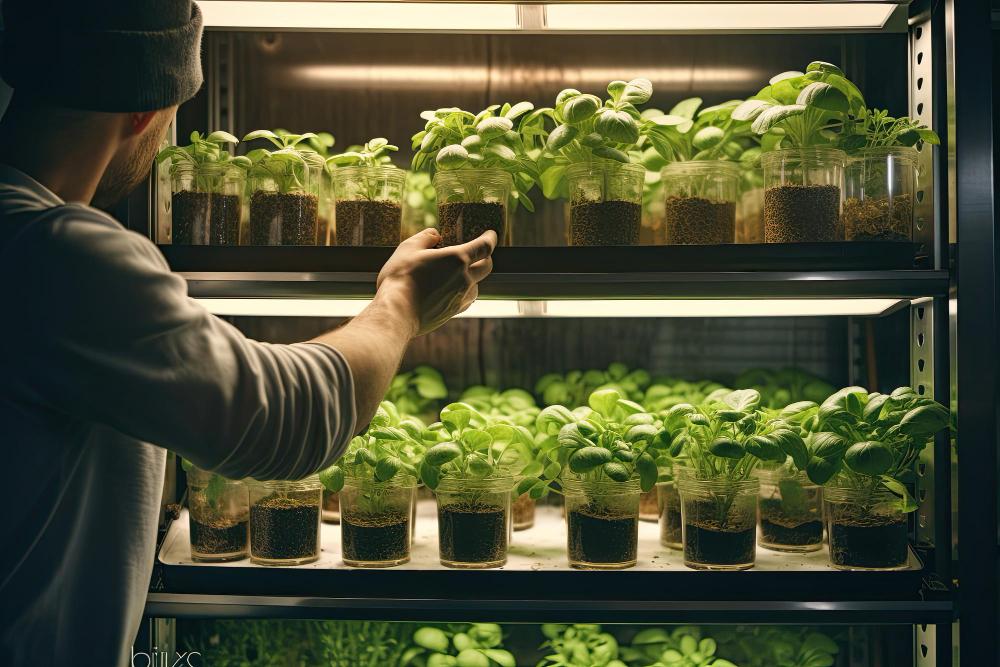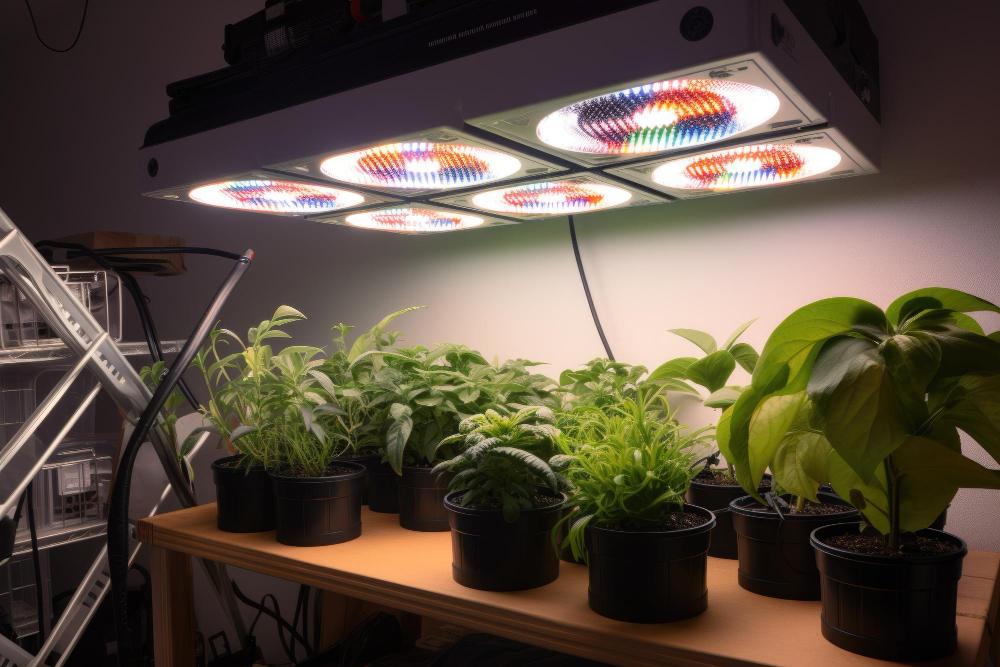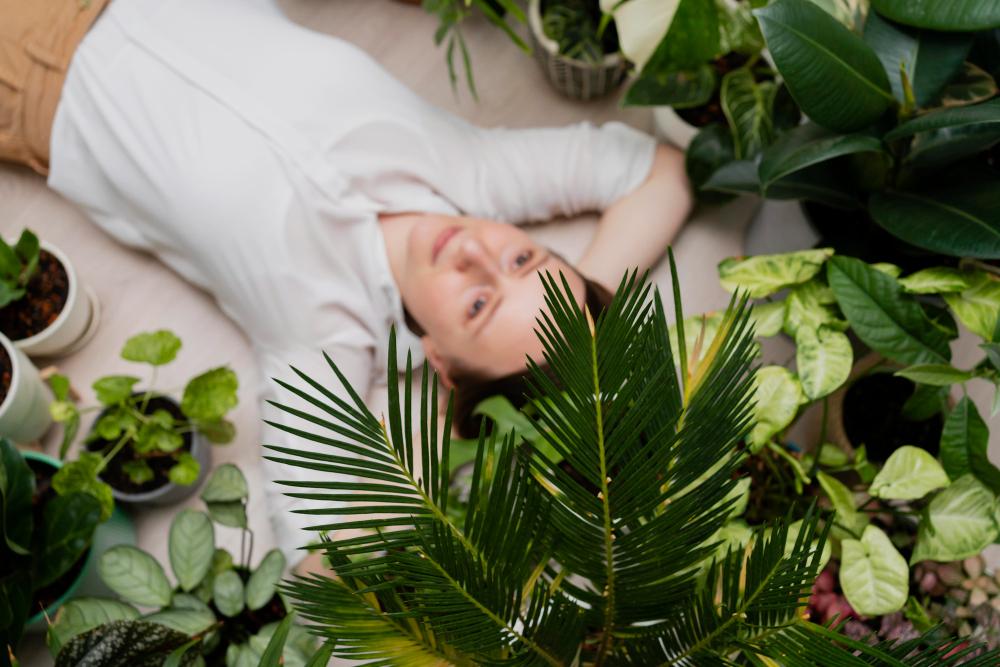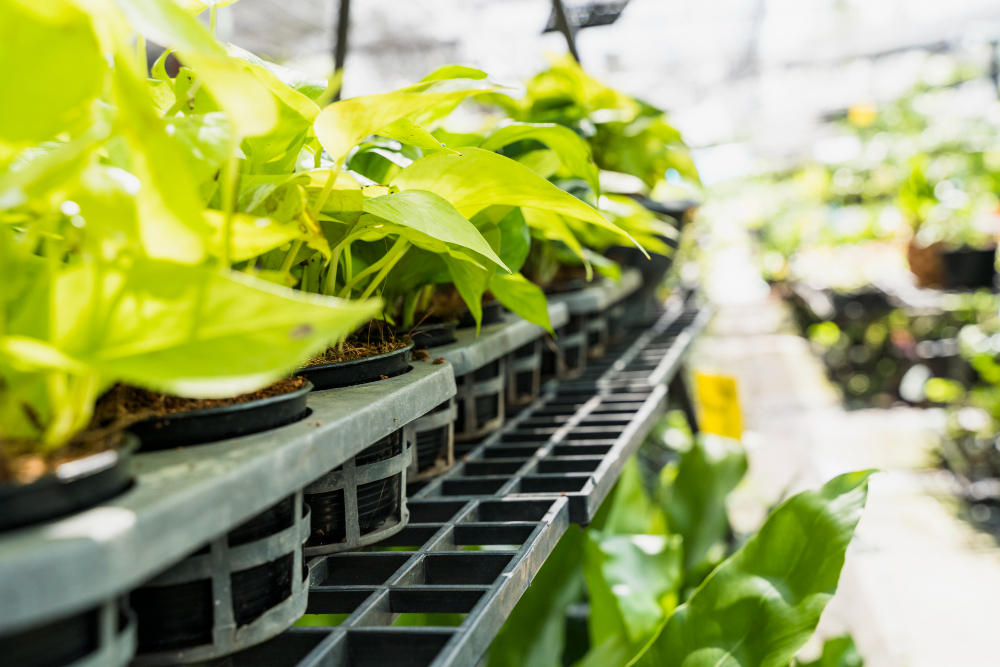Introduction
Welcome to our guide on indoor gardening for kids! Gardening is an enjoyable and educational hobby that can teach children about the wonders of nature, responsibility, and care. Indoor gardening, in particular, can be an excellent way to learn about plant care and provide a hands-on learning experience in any weather.
In this article, we will explore various fun projects to ignite children’s interest in plants and gardening. We will provide tips on gardening with children and exciting gardening activities that will keep them engaged. From sensory gardens to creating miniature vegetable gardens, there’s something for every child’s interest and skill level.
Key Takeaways
- Indoor gardening can be a fun and educational activity for children to learn about plant care and nature.
- Gardening with children provides opportunities for hands-on learning and instills a sense of responsibility and care.
- There are many exciting gardening activities for children, from creating sensory gardens to growing miniature vegetable gardens.
- Teaching sustainability and eco-friendly concepts can be incorporated into indoor gardening projects.
- STEM concepts can also be integrated into indoor gardening, providing a hands-on, multidisciplinary learning experience.
Why Indoor Gardening is Great for Kids
At Acorn Horticulture, we believe that indoor gardening is a fantastic way to introduce children to the wonderful world of plants and nature. Not only is it a fun and engaging activity, but it also offers numerous benefits for kids. Here’s why:
Teaches Responsibility and Care
Indoor gardening for kids is an excellent way to teach them about responsibility and care. Tending to plants and ensuring they receive the right amount of water, sunlight, and nutrients helps children understand the importance of taking care of living things and being accountable for their actions.
Provides a Hands-on Learning Experience
Indoor gardening provides a unique hands-on learning experience for children. They can observe the growth process of plants, learn about plant care, and even experiment with different gardening techniques. This interactive experience helps foster a love for learning and encourages children to explore the natural world around them.
Encourages Healthy Eating Habits
Indoor gardening is an excellent way to encourage healthy eating habits in children. By growing their fruits, vegetables, and herbs, kids can develop a better understanding of where their food comes from and how it’s grown. It can also inspire them to try new foods and incorporate fresh produce into their meals.
Overall, indoor gardening for kids is a fun and educational activity that can enhance their understanding of plants, nature, and the world around them. At Acorn Horticulture, we believe that every child should have the opportunity to experience the joys of gardening and develop a lifelong love for nature.
Getting Started with Indoor Gardening
Welcome to the world of indoor gardening for kids! Before diving into gardening projects, it’s essential to understand the basics of indoor gardening to set your child up for success.
The Necessary Supplies
Firstly, you will need some basic supplies before embarking on your indoor gardening journey with kids. These include:
- Pots or containers suitable for indoor gardening
- Good quality potting soil
- Seeds or plants of your chosen variety
- Watering can or spray bottle
- Pruning shears or scissors
- Gardening gloves (optional but recommended)
Suitable Plants for Indoor Gardening
The second step is to choose suitable plants for indoor gardening with kids. It’s essential to select plants that can thrive in indoor conditions, have low maintenance requirements, and offer an exciting learning experience for children.
Some suitable plant choices for indoor gardening include:
- Herbs
- Succulents and cacti
- Spider plants
- Pothos
- Peace lilies
The Right Conditions for Successful Indoor Plant Cultivation with Kids
Finally, it’s vital to create the right conditions for your indoor plants to thrive and create a healthy learning environment for children.
Some tips for optimal indoor plant growth include:
- Choosing a well-lit area with indirect sunlight
- Maintaining consistent moisture levels (not too wet or too dry)
- Providing proper ventilation and temperature control
- Regularly fertilising and pruning your plants
If you follow these basic steps, you’ll be well on your way to creating a successful indoor gardening project with your child. Stay tuned for more exciting gardening projects!
Kid-Friendly Gardening Projects
Engaging children in gardening activities is a great way to develop their love for nature and teach them essential life skills. Here are some exciting and easy-to-implement kid-friendly gardening projects that will captivate their interest and encourage them to explore the world of plants.
Garden Scavenger Hunt
Create a scavenger hunt list of items such as a yellow flower, a snail, a ladybug, or a round leaf. Give your child a basket and let them explore the garden to find all the items on the list. This activity helps kids learn about different plants, insects, and the environment while having fun.
Garden Journal
Encourage your child to start a garden journal. They can document the growth of their plants, draw pictures, and write about their experiences. This activity helps kids observe and track the changes in their garden, improve their writing skills and develop a sense of responsibility.
Sensory Garden
Create a sensory garden with different plants, textures, smells, and colors. Include plants such as lavender, mint, or thyme that release fragrant scents. Add plants with different textures, such as lamb’s ears or sunflowers. This activity helps kids learn about different plant senses and stimulates their own senses.
DIY Planter
Create a DIY planter with your child using recycled materials such as plastic bottles or tin cans. Let them decorate the planter with paints, stickers, or glitter. This activity teaches kids about upcycling and reduces waste while nurturing their creativity.
Butterfly Feeder
Create a butterfly feeder by filling a shallow dish with sugar water and placing it in the garden. Let your child observe as butterflies come to feed and discuss the important role of pollinators in the garden. This activity teaches kids about the ecosystem and promotes environmental awareness.
Window Herb Garden
Create a window herb garden with your child by planting herbs such as basil, parsley, or chives in small pots. Place them on the windowsill and watch them grow. This activity teaches kids about plant care and provides a fresh supply of herbs for the kitchen.
Dwarf Sunflowers
Plant dwarf sunflowers, as they are easy to grow and provide an attractive display. Let your child decorate the pot with stickers or paints and watch as the sunflowers grow tall. This activity teaches kids about the life cycle of a plant and the importance of sunlight, water, and soil.
These are just a few of the many kid-friendly gardening projects that you can try. Get creative and have fun while teaching your child about the wonders of nature!
Growing Herbs Indoors
Herbs are a fantastic choice for indoor gardening with kids. Not only are they relatively easy to grow, but they also provide delicious flavors and aromatic scents that can stimulate children’s senses. Here are some tips for growing herbs indoors with your little ones.
Choosing the Right Herbs
When selecting plants to grow indoors, it’s essential to choose herbs that thrive in low light conditions and can tolerate fluctuations in temperature and humidity. Some of the best herbs for indoor cultivation include basil, mint, chives, and parsley.
These herbs are easy to grow and care for, making them perfect for kids to tend to. Additionally, they offer a wide range of flavors and aromas that can be used to enhance your cooking and create delicious meals.
Creating the Perfect Environment
To ensure that your herbs grow healthy and strong, it’s important to provide them with the ideal growing conditions. Here are some things to keep in mind:
- Light: Herbs need at least six hours of bright, indirect light a day to thrive. You can place them near a sunny window or use artificial grow lights.
- Soil: The soil should be well-draining and rich in nutrients. You can use a high-quality potting mix or make your own by mixing equal parts of perlite, peat moss, and vermiculite.
- Water: While herbs need consistent moisture, overwatering can be detrimental. Make sure to water your herbs when the top inch of soil is dry to the touch.
- Temperature: Most herbs prefer temperatures between 60-70°F (15-21°C). Avoid placing them near drafty windows or vents.
Harvesting and Using Herbs
Once your herbs have grown to maturity, it’s time to harvest them and enjoy their delicious flavors. Here are some tips for harvesting and using your herbs:
- Harvest in the morning: This is when the essential oils in the herbs are most potent.
- Pinch the leaves: To harvest, gently pinch the leaves off the stem using your fingers. Avoid cutting the entire stem, so the plant can continue to grow and produce leaves.
- Use immediately: Fresh herbs offer the best flavor, so try to use them immediately after harvesting. Alternatively, you can dry them for later use.
Growing herbs indoors with kids is an excellent way to teach them about plant care and provide a fun, hands-on learning experience. Get started on your indoor herb garden today and enjoy the delicious flavors and aromas of fresh herbs in your home!
Creating a Mini Vegetable Garden
Vegetables are an excellent choice for indoor gardening with kids. They offer a hands-on learning experience while introducing healthy food options. When selecting vegetables for an indoor garden, make sure to consider the available space, lighting, and temperature.
Choosing the Right Vegetables
Leafy greens and herbs are great options for an indoor vegetable garden. They grow well in pots and can provide a continuous harvest. Tomatoes, peppers, and small root vegetables like carrots and radishes can also thrive indoors with proper care. When selecting vegetables, look for varieties that are compact and suitable for indoor growing conditions.
Preparing the Soil
Vegetables require healthy soil to grow correctly. Choose a potting mix specifically designed for indoor gardening, and make sure it contains enough nutrients for the plants. Fill the container with the soil, leaving enough space for the plant to grow.
Planting the Seeds
After preparing the soil, it’s time to plant the seeds. Follow the instructions on the seed packet, and make sure to plant the seeds at the proper depth and spacing. Once the seeds are planted, gently water the soil. Keep the soil moist but not waterlogged.
Caring for the Plants
Vegetables require proper care to thrive indoors. Make sure they receive enough sunlight, at least six hours a day, or supplement with grow lights. Water regularly, and do not let the soil dry out completely. Additionally, fertilise the plants with a suitable fertiliser every few weeks to provide the nutrients they need to grow.
With a little care and attention, a mini vegetable garden can be a fun and rewarding project for kids. Not only will they learn about plant care and responsibility, but they will also have the satisfaction of growing healthy, delicious food.
Exploring Terrariums
One of the most captivating projects in indoor gardening for kids is exploring terrariums. Terrariums offer a fun and exciting way for children to create their miniature ecosystems, making them perfect gardening activities for children.
A terrarium is essentially a miniature garden contained in a glass container. It is a self-sustaining ecosystem that requires minimal care and attention, making it perfect for children to learn about plant care and responsibility.
Setting Up Your Terrarium
Setting up your terrarium is a simple and easy process. First, choose a glass container with a lid that can provide a suitable environment for the plants you want to grow. Next, add a layer of pebbles or gravel at the bottom of the container for drainage. Cover this layer with a layer of activated charcoal to keep the terrarium fresh and prevent mold growth. Then, add a layer of soil suitable for the plants you want to grow.
Select plants that thrive in humid environments and have similar sunlight and water requirements. Suitable plants include ferns, mosses, and succulents. Place the plants in your terrarium and add any decorations or accessories you want to incorporate, such as small figurines or rocks.
After setting up your terrarium, place it in an area with indirect sunlight, as direct sunlight can cause the glass container to overheat. Water the plants sparingly, using a spray bottle or dropper to avoid overwatering and causing waterlogging. Terrariums are a low-maintenance indoor gardening option, perfect for children to learn about plant care and enjoy their own miniature garden.
Overall, exploring terrariums is an excellent way to introduce children to the world of indoor gardening. These miniature gardens are easy to set up, require minimal care, and offer an exciting way for children to learn about plant care and responsibility.
Caring for Succulents and Cacti
Indoor gardening for kids is not complete without exploring the fascinating world of succulents and cacti. These low-maintenance plants are perfect for children to learn about plant care and responsibility.
Plant Care for Kids: Succulents and cacti require little watering and can tolerate a range of temperatures and humidity levels. Ensure that the soil is well-draining and that the plants receive enough sunlight.
Indoor Gardening for Kids: Children can learn the importance of plant care through observing and taking care of succulents and cacti. They can also explore the unique shapes and colours of these plants and arrange them in creative ways.
Kids Gardening Ideas: Encourage children to create their miniature desert landscapes by combining different types of cacti and succulents. They can also make their pots by painting and decorating them with sand and stones.
Sensory Gardens for Kids
When it comes to indoor gardening for kids, sensory gardens are a fantastic way to encourage exploration and creativity. Sensory gardens stimulate the senses, providing children with a hands-on sensory experience that awakens their curiosity and interest in nature.
When planning a sensory garden, it’s essential to consider the types of plants and elements that will engage each of the five senses: sight, touch, taste, smell, and sound. By including a range of plants and materials that appeal to these senses, children can learn about the world around them in a fun and engaging way.
Plants for Sensory Gardens
- Sight: Choose plants with vibrant colors or unique shapes that catch the eye, such as multi colored chrysanthemums, purple passion plants, or spider plants.
- Touch: Incorporate plants with interesting textures, such as lamb’s ear, succulents, or Venus flytraps. You can also add materials like pebbles, smooth stones, or soft grasses.
- Taste: Add tasty herbs like basil, rosemary, or mint, or consider growing vegetables like cherry tomatoes or cucumbers that children can pick and taste.
- Smell: Include fragrant flowers like lavender, jasmine, or roses, or herbs like thyme, oregano, and cilantro that release their scents when touched.
- Sound: Add plants that create a gentle rustling sound when the wind blows, like bamboo, ornamental grasses, or russet-hued sedges.
Elements for Sensory Gardens
In addition to plants, sensory gardens can also incorporate various elements that engage the senses. Consider adding:
- Water features: Small fountains or ponds that provide a soothing sound and a calming visual experience.
- Wind chimes: Chimes or bells that create sweet, tinkling sounds when the wind blows.
- Statues or sculptures: Decorative sculptures or statues that children can touch and explore.
- Touchable materials: Different materials such as stones, shells, or bark for children to touch and explore.
- Seating areas: A place for children to sit, relax, and enjoy the garden.
Creating a sensory garden is a perfect way to introduce children to the world of indoor gardening for kids. By incorporating a range of plants and materials that engage the senses, you can create an immersive and exciting learning experience for children.
Incorporating STEM Learning in Indoor Gardening
At Acorn Horticulture, we believe that indoor gardening for kids is not only a fun activity but an excellent opportunity to incorporate STEM learning in a hands-on way. STEM education is crucial for children’s development, as it promotes problem-solving skills, critical thinking, and creativity.
Here are some ideas on how to integrate STEM concepts into your indoor gardening projects:
- Measurement: Gardening provides endless opportunities for measuring and comparing. Encourage kids to measure plant growth in centimetres or inches and track the progress over time. They can also measure the amount of water and fertiliser used for each plant.
- Botany: Indoor gardening allows children to learn about plant anatomy and biology. Teach them the different parts of a plant, such as the stem, leaves, and roots. Discuss the process of photosynthesis and how plants convert sunlight into energy.
- Engineering: Encourage kids to design and build their own planters using recycled materials or Legos. They can also design an irrigation system to water their indoor garden automatically.
- Technology: Use technology to enhance the indoor gardening experience. For example, you can download plant identification apps that allow children to identify plants and learn about their care requirements.
- Mathematics: Gardening involves plenty of math skills, such as calculating the area of the garden bed or container. You can also introduce concepts such as ratios and proportions when mixing soil or fertiliser.
By incorporating STEM concepts into indoor gardening projects, children can develop a love for science and technology while learning valuable life skills. The possibilities are endless, and the learning opportunities are endless with indoor gardening for kids.
Teaching Sustainability Through Indoor Gardening
At Acorn Horticulture, we believe that indoor gardening for kids is not just about cultivating plants, but also about developing a deep sense of responsibility and care for the environment. By introducing sustainable practices, we can teach children the importance of reducing waste, conserving resources, and protecting the earth’s natural ecosystems.
Reducing Waste
One of the first steps towards sustainability is reducing waste. We can teach kids to compost food scraps, cardboard, and paper products instead of throwing them in the trash. Composting not only reduces waste and landfill space but also creates nutrient-rich soil that can be used in indoor gardening projects!
Conserving Resources
We can also teach children to conserve resources like water and electricity. By using a watering can instead of a hose, kids can become more aware of how much water they are using and limit unnecessary waste. Turning off lights and unplugging electronics when not in use can also help conserve electricity and reduce our carbon footprint.
Protecting Ecosystems
Finally, indoor gardening can also be an opportunity to talk to kids about protecting ecosystems. By using natural pest control methods instead of harmful chemicals, we can keep our plants healthy while also protecting the earth’s natural ecosystems. Additionally, by growing native plants, we can help support local wildlife and biodiversity.
By incorporating sustainable practices and eco-friendly concepts into indoor gardening projects, we can teach children valuable life skills and help create a better future for our planet. Let’s work together to raise a generation of environmentally conscious individuals!
Conclusion
At Acorn Horticulture, we believe that indoor gardening is an excellent way to spark a love for plants in children. By engaging in fun projects and activities, kids can learn valuable skills such as responsibility, care, and sustainability.
Through indoor gardening, children can develop an appreciation for nature and the environment around them. They can explore the wonders of plant growth and learn about different types of plants. Gardening with children also provides a great opportunity to incorporate STEM learning into their experience.
We hope that this article has inspired you to start your child’s indoor gardening adventure. Remember, it’s not about the end result; it’s about the journey and the memories created along the way. Let’s cultivate a passion for plants in the next generation!
FAQ
Q: Why is indoor gardening great for kids?
A: Indoor gardening is a fantastic way to introduce children to nature and teach them about plant care. It provides a hands-on learning experience and helps develop a sense of responsibility and care.
Q: What do I need to get started with indoor gardening?
A: To get started with indoor gardening, you’ll need basic supplies such as pots, potting soil, seeds or plants, and watering cans. Additionally, make sure to choose suitable indoor plants that thrive in the right conditions.
Q: What are some kid-friendly gardening projects?
A: There are plenty of exciting gardening projects for kids, such as creating a sensory garden, building a terrarium, or growing herbs and vegetables indoors. These projects not only engage children but also teach them valuable skills.
Q: How do I care for succulents and cacti?
A: Succulents and cacti are low-maintenance plants perfect for kids to learn about plant care. They require minimal watering and prefer bright light. Make sure to provide well-draining soil and avoid overwatering.
Q: How can I incorporate STEM learning in indoor gardening?
A: Indoor gardening offers a fantastic opportunity to integrate STEM concepts. You can explore topics like plant growth, photosynthesis, and soil composition. Engage children in experiments, measurements, and observations to enhance their learning experience.
Q: How can indoor gardening teach sustainability to children?
A: Indoor gardening can teach children about sustainability by introducing concepts like composting, recycling, and water conservation. It encourages them to take care of the environment and understand the interconnectedness of nature.

